China is made up of many beautiful landscapes and sceneries. You’ll find many lovely beaches, lakes, and springs, along with expansive plains and valleys. The country also has magnificent mountain ranges. While China’s culture attaches great importance and value to all forms of nature, Mountains are the most revered.
This is mostly owing to the Taoism religion, which involved the worship of mountains. Followers of this religion believed that mountains were sacred and a communication medium between the heavens and mankind. They also believed that mountains are where immortality can be found. That is why, mountains have a significant place in Chinese culture, where t5 of them are considered sacred mountains.
The focus, however, will be on Huangshan Mountain. While it is not among the five sacred mountains, nor is it the largest one in China, it is considered the loveliest mountain in the entire country. This post is an overview of the important facts and information you need to know about Huangshan Mountain. We will cover the location of the mountain, how to get to it, the meaning of the name and why it is so famous.
Where is Mount Huangshan?
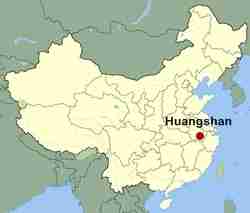
The magnificent Huangshan Mountain shares the same name as the city where it is located. You’ll find the mountain in the Eastern region of China, in the southern part of Anhui province where there is a city called Huangshan. The mountain covers 250km of land. Of this, 154 square kilometers are scenic attractions.
The major scenic areas on the mountain are as follows:
Jade Screen Scenic Area.
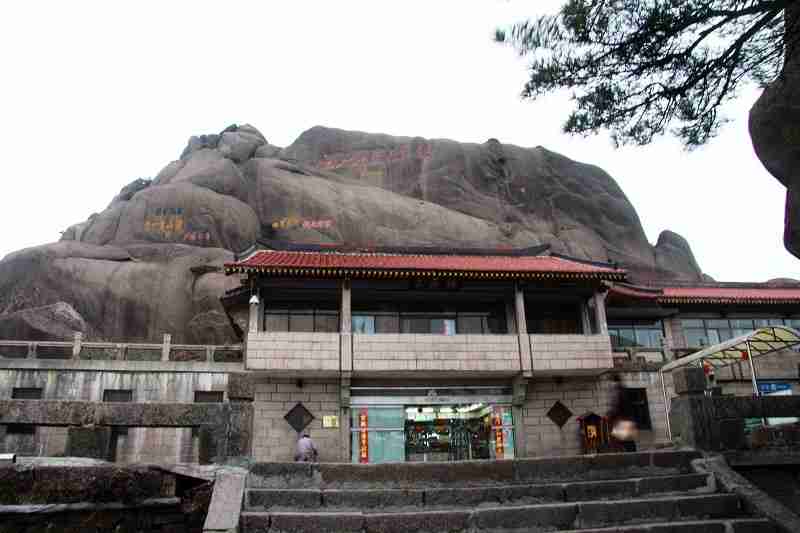
The scenic area is located at the front of the Mountain, not far from Yuping Cableway Station. This area has some of the most breathtaking sites. Among them is Lotus peak, which is the highest peak of the mountain, and the Guest Greeting Pine, which is considered a symbol of the mountain. Other great sites include Jade Screen Peak and Celestial Capital Peak.
Beihai Scenic Area.
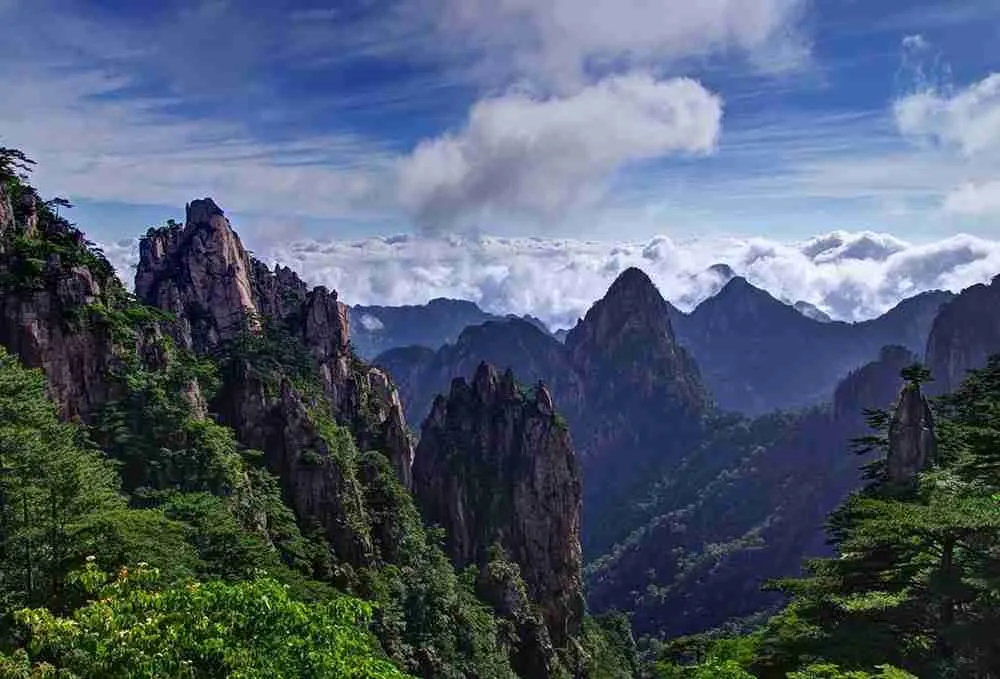
It is located at the backside of the mountain to the east, close to the Yungu Cableway. The area is a wide and open region 1600m high. It is loved for its sea of clouds, lofty peaks, and historical sites. That is why many tourists prefer starting and ending their hike of the Huangshan Mountain in this area.
Tianhai Scenic Area.
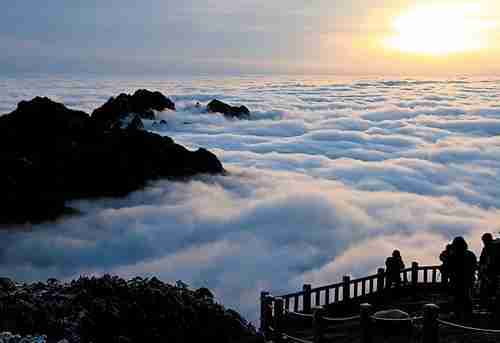
The area is located in the middle of the mountain and is closest to the Baiyun hotel. The main sights in this area include the famous Flying rock and the Bright Summit, which is the second-highest and center peak of the mountain. This area is also where all the roads and paths of the mountain converge, so you can go in any direction from this point.
West Sea Grand Canyon.
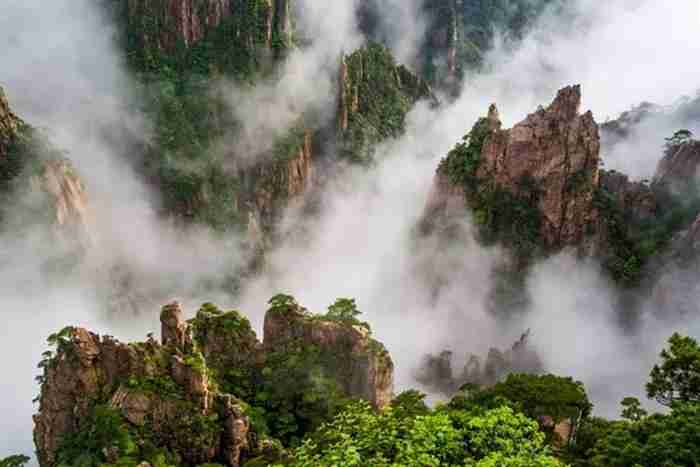
As per the name, this scenic area is on the western side of the mountain and can be accessed from the West gate. It is considered the dreamland of the mountain and the biggest highlight of the tourists hiking. Given its wild and fathomless valleys, it is also called the Mysterious Valley. While hiking from this area, you can start from the Dispelling cloud pavilion and explore different areas from the 1st and 2nd ring and the Baiyun new path.
How To Get to Yellow Mountain from Shanghai.
To get to the Huangshan Mountain, you first have to get to the Huangshan city before proceeding to the location of the mountain. To get to the city you can use a plane, bus or train, and then take a bus to the mountain’s scenic area that would take about an hour. But if you want to go directly to the mountain, some buses make the four-hour journey there and a three-hour journey back to the city.
From Shanghai, you can either take a plane that will leave you at the Huangshan airport, which is 10 minutes away from the city by car. You could also take a bus which will get you there in 6 hours, or opt for a train which will take twice as long.
What is the elevation of Huangshan?
While it is nowhere close to the Himalayas, this great mountain range boasts an elevation of 6,115ft (1,864m). It’s made up of 72 peaks all above the altitude of 1000 meters above sea level. The three tallest peaks which are fascinating yet dangerously steep are, lotus peak, bright peak, and celestial peak. The tallest peak is the Lotus with a height of 1,864m, followed by Bright with 1,860m, and finally, Celestial which is 1829m tall.
The mountain is characterized by cliffs and stone pillars and blocks. One thing to note about the mountain is as you go higher in altitude the vegetation changes. You’ll find a mesic forest dominated by thick vegetation, in altitudes below 3,600ft. At 5,905ft the area is covered by a deciduous forest and above that altitude going up you’ll find alpine grasslands.
Another thing that defines the mountain is the famous sea of clouds. These are formed by the vapors that coagulate to form clouds that cloak the mountain 200 days a year. The sight gives off a feeling of being in Fairyland.
Why is Huangshan called the Yellow Mountain?
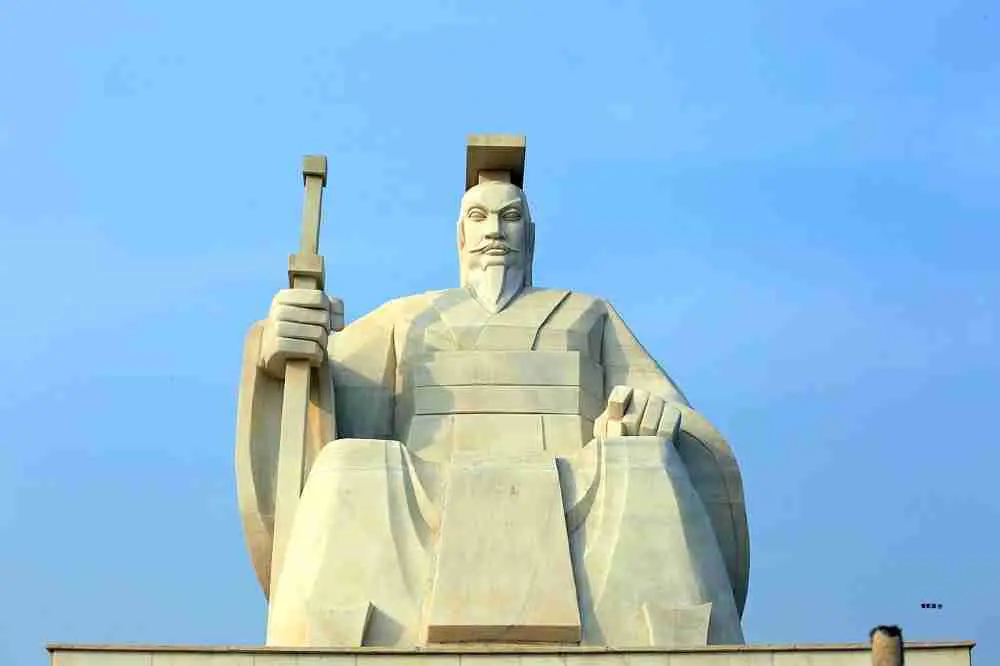
Huangshan Mountain has existed for approximately 100 million years. Initially, it was called Yishan or Mount Yi. It wasn’t until the imperial decree during the Han dynasty that its name was changed to Huangshan or Mount Huang. The name Huangshan translates to Yellow Mountain, which is why it is also referred to by that name. It was named after the Yellow Emperor and not because of the appearance of the mountain.
The Yellow Emperor is considered the greatest emperor and the ancestor of the Han people. He is seen as a mythological being. According to Chinese legends, the Yellow Mountain is where he would go to practice his alchemy and refine the Pills of Mortality. It is also believed that he ascended to heaven from the Yellow Mountain. As such, the mountain was given his name. From there Huangshan began its rise to become one of the most renowned mountains in China.
What is Huangshan famous for?
The Huangshan is a popular and loved mountain in China for many reasons. The main reason, however, is its four wonders which are the biggest highlights of the mountain. They are as follows:
The Cloud Sea.
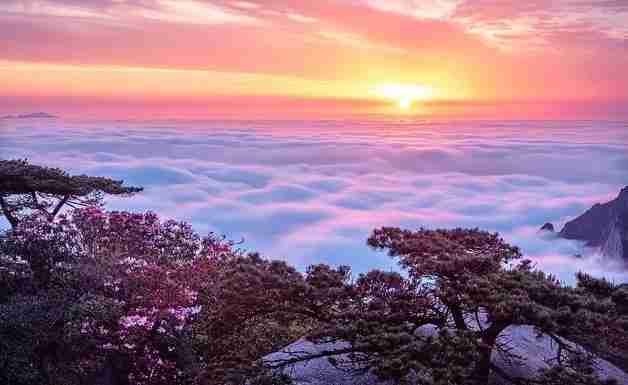
The sea of clouds that cloak the mountain is the best phenomenon of the Yellow Mountain. They make the peaks seem like islands in the sky and offer a dreamland aesthetic. The best times this beautiful sight is from November to May, from any of the three tallest peaks.
The Flying Rock.
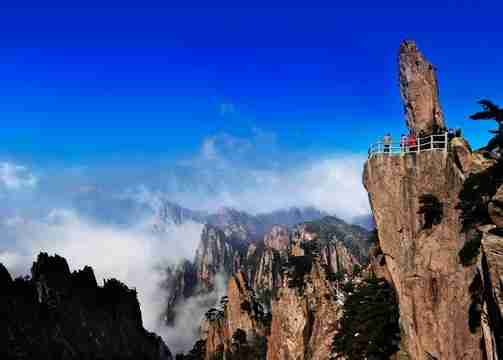
The Yellow Mountain has many oddly-shaped rocks each with its own story and name. The most amazing one, however, is the Flying Rock. This is a 12m long boulder that is tilting from a small contact area on a huge rock ledge. This makes it seem like it’s rather floating in the air, hence the name.
The Greeting Guest Pine.
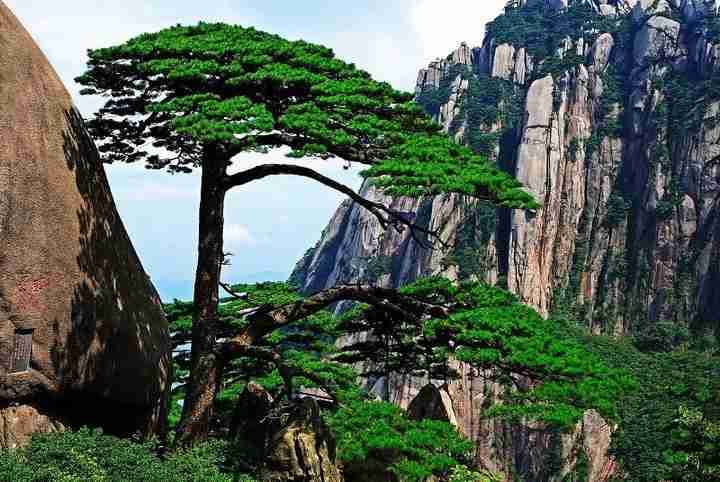
Like the rocks, the old pines found in the mountain also have a story behind them. The most popular ones however are the greeting guest pines, which are considered to be the symbols of the mountain. Their name is a result of their shape. They are 10m tall and resemble the shape of a man standing in the side of the path and stretched branches that look like hands stretched out for a greeting.
The Spring of Youth.
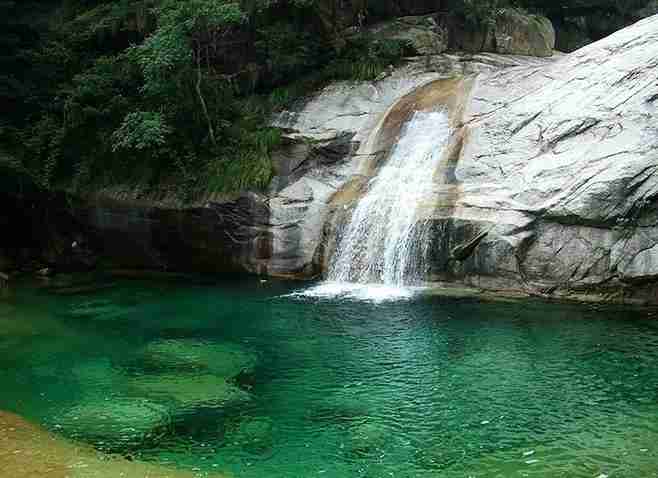
The Yellow Mountains have hot springs which according to legend, the Yellow Emperor would bathe in and become younger. As such the hot springs are believed to have the function of healing and restoration.
Conclusion.
There are many reasons to want to visit the Yellow Mountains. Aside from its four wonders, it is also famed for its glorious sunsets and sunrises. In fact, another extra wonder of the mountain that happens on occasion is the Buddha’s light. This is when you are above the cloud sea between the sun and a cloud. This positioning is said to cause a ring of light to form around your shadow and is believed to be a sign of your enlightenment. Given such amazing sights, it is no wonder Yellow Mountain is such a popular tourist attraction.